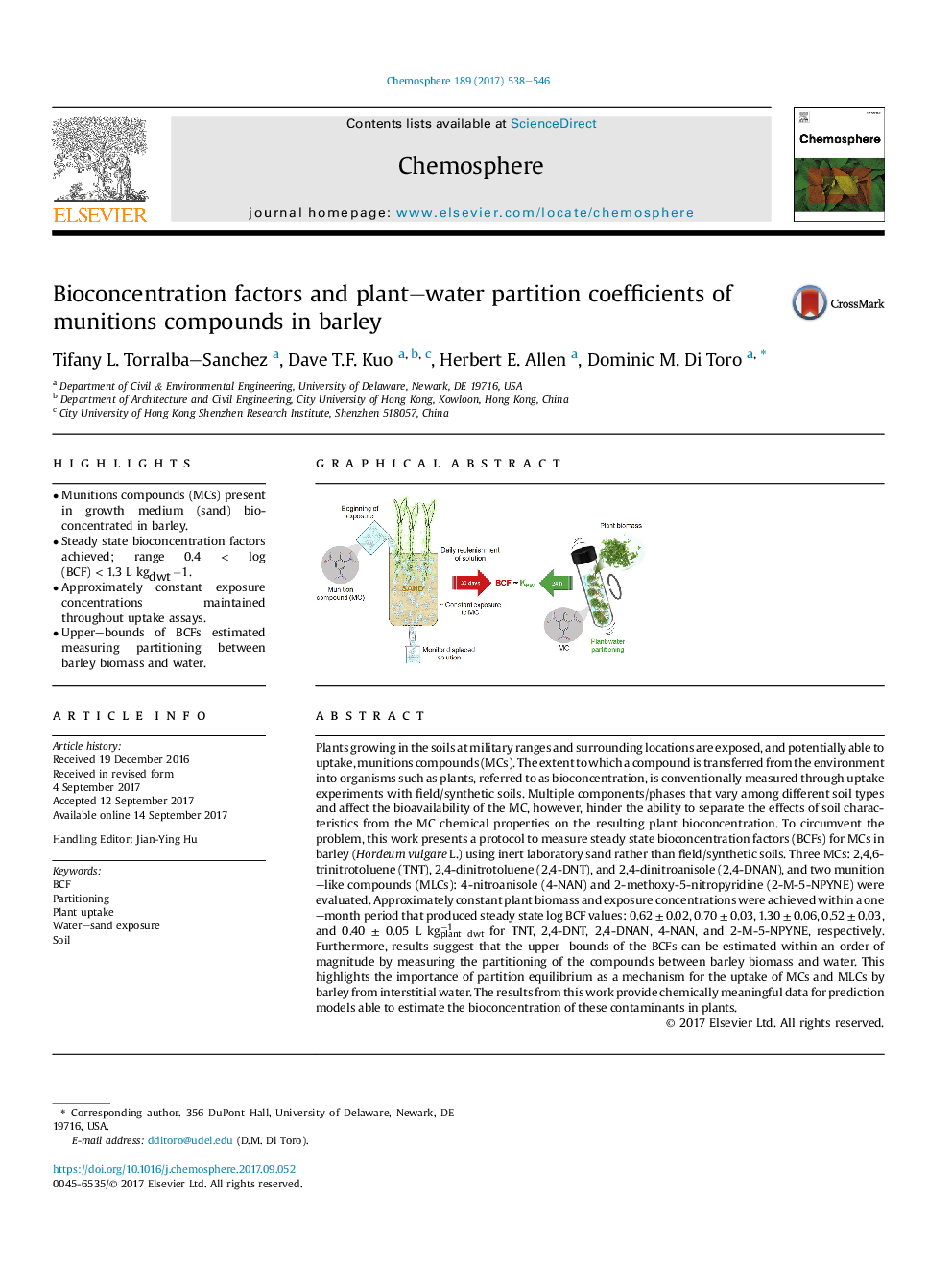| کد مقاله | کد نشریه | سال انتشار | مقاله انگلیسی | نسخه تمام متن |
|---|---|---|---|---|
| 5745892 | 1618782 | 2017 | 9 صفحه PDF | دانلود رایگان |
- Munitions compounds (MCs) present in growth medium (sand) bioconcentrated in barley.
- Steady state bioconcentration factors achieved; range 0.4Â <Â log (BCF)Â <Â 1.3Â L kgdwtâ1.
- Approximately constant exposure concentrations maintained throughout uptake assays.
- Upper-bounds of BCFs estimated measuring partitioning between barley biomass and water.
Plants growing in the soils at military ranges and surrounding locations are exposed, and potentially able to uptake, munitions compounds (MCs). The extent to which a compound is transferred from the environment into organisms such as plants, referred to as bioconcentration, is conventionally measured through uptake experiments with field/synthetic soils. Multiple components/phases that vary among different soil types and affect the bioavailability of the MC, however, hinder the ability to separate the effects of soil characteristics from the MC chemical properties on the resulting plant bioconcentration. To circumvent the problem, this work presents a protocol to measure steady state bioconcentration factors (BCFs) for MCs in barley (Hordeum vulgare L.) using inert laboratory sand rather than field/synthetic soils. Three MCs: 2,4,6-trinitrotoluene (TNT), 2,4-dinitrotoluene (2,4-DNT), and 2,4-dinitroanisole (2,4-DNAN), and two munition-like compounds (MLCs): 4-nitroanisole (4-NAN) and 2-methoxy-5-nitropyridine (2-M-5-NPYNE) were evaluated. Approximately constant plant biomass and exposure concentrations were achieved within a one-month period that produced steady state log BCF values: 0.62 ± 0.02, 0.70 ± 0.03, 1.30 ± 0.06, 0.52 ± 0.03, and 0.40 ± 0.05 L kgplant dwtâ1 for TNT, 2,4-DNT, 2,4-DNAN, 4-NAN, and 2-M-5-NPYNE, respectively. Furthermore, results suggest that the upper-bounds of the BCFs can be estimated within an order of magnitude by measuring the partitioning of the compounds between barley biomass and water. This highlights the importance of partition equilibrium as a mechanism for the uptake of MCs and MLCs by barley from interstitial water. The results from this work provide chemically meaningful data for prediction models able to estimate the bioconcentration of these contaminants in plants.
301
Journal: Chemosphere - Volume 189, December 2017, Pages 538-546
